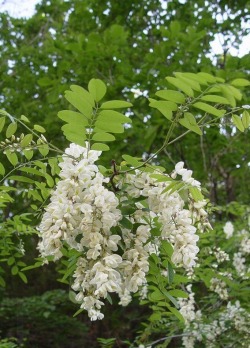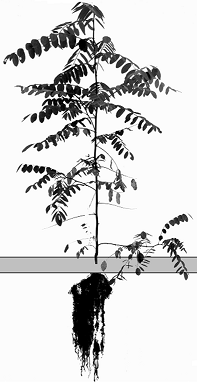Leaf movement of black locust (Robiniapseudoacacia) alleviate stress under different light and water conditions
Summary
figure 1. The leaves and flowers of R. pseudoacacia

Many plants have developed defensive responses to stress conditions, including the
mechanical movement of leaves, frequent in leguminous species. The black locust tree Robinia pseudoacacia L. is a nitrogen-fixing, leguminous deciduous species. Leaf morphological, physiological and biochemical characteristics of Robinia pseudoacacia L. seedlings were studied under different stress conditions. The plants were subjected to drought and shade stress for one month. Leaf inclination was measured at the first day (short-term stress) and at the end of the stress period (long-term stress) and in the recovery period.
mechanical movement of leaves, frequent in leguminous species. The black locust tree Robinia pseudoacacia L. is a nitrogen-fixing, leguminous deciduous species. Leaf morphological, physiological and biochemical characteristics of Robinia pseudoacacia L. seedlings were studied under different stress conditions. The plants were subjected to drought and shade stress for one month. Leaf inclination was measured at the first day (short-term stress) and at the end of the stress period (long-term stress) and in the recovery period.
figure 2. the sketch of the leaves and roots of R. pseudoacacia

Leaf inclination was affected mainly by light; a low level of irradiance caused leaves to be arranged horizontally. Diurnal rhythmicity was lost after the long-term stress, but resumed, in part, in the recovery period. Drought stress caused leaves to tilt more obviously and decreased damage to the photosystem. Sun avoiding movement in a single leaf and sun tracking movement in the whole plant coexisted. Significant physiological changes occurred under different conditions of light. These adaptive mechanisms may explain better survival of R. pseudoacacia seedlings in the understory, especially during the drought periods, and made it to be the preponderant reforestation species in Shandong Province of China
